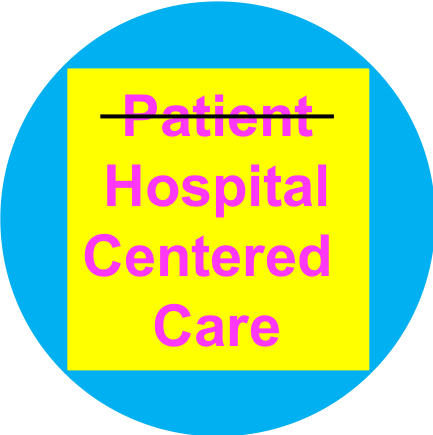Hospital centered care
 Healthcare decisions are increasingly driven by efficiency and economic factors, even at the end of life. This was brought home to me several months ago with my mother’s death after a short hospitalization for a lung infection.
Healthcare decisions are increasingly driven by efficiency and economic factors, even at the end of life. This was brought home to me several months ago with my mother’s death after a short hospitalization for a lung infection.
Because I was planning to be on vacation during the time of her hospitalization, I was able to be at her side pretty much full time, allowing me a front row seat to a series of decisions that were based on efficiency and hospital reputation rather than patient care.
Beginning in the emergency room, unnecessary tests were ordered to establish the underlying reason for her breathing problems when a simple call to her primary care physician would have yielded a complete picture of what was going on. In fact, she had seen her doctor the day before admission and had a full set of blood work and a full treatment plan in place in case her condition worsened. Her primary care physician was even on call the day of her admission to the hospital. But calling a doctor is inconvenient – you have to find the number, wait for him or her to answer your call and disrupt your workflow to answer the call. Ordering duplicate tests is a lot easier (and paid for by Medicare), especially when you have lots of other patients to see.
Once my mother was admitted, she was cared for by hospitalists – doctors whose job is to take care of hospitalized patients. Each day there was a new hospitalist so there was no continuity of care. In general, the hospitalists seemed to see their role as mostly clerical – arranging for all the tests ordered by the multitude of consultants or specialists. When I tried to ask the hospitalists what they thought was going on with my mother, the answer was usually something like “we are waiting for the tests to come back”. There was one hospitalist who I thought was quite good and who was able to see the big picture, but he was gone the next day and we had to start over with a new hospitalist.
When it became clear that my mother’s breathing was not going to improve, she decided she wanted to have the oxygen mask removed (which she found incredibly uncomfortable) and to be allowed to die. The plan was to start her on morphine and to gradually increase the dose so that the oxygen mask could be removed without her gasping for breath. The hospitalist wrote the order for the morphine drip to be started but we waited for several hours and the morphine was not started.
We eventually realized that the hospital wanted her “transferred” to hospice care before she died. Hospice care is when a patient is dying and all of the efforts are focused on making the patient comfortable – no further life-sustaining care is given. If my mother was “transferred” to hospice (just a technicality, she would not actually be moved) she would no longer be considered a hospital inpatient. The hospital didn’t want her death counted against their mortality rate – the “transfer” would allow them to say that she had been discharged from the hospital while still alive.
Sadly, I don’t believe that my mother received uniquely bad care.
I think she received typical care.
0 thoughts on “Hospital centered care”